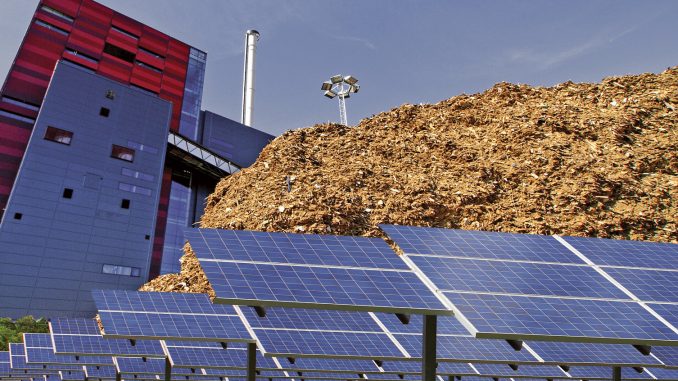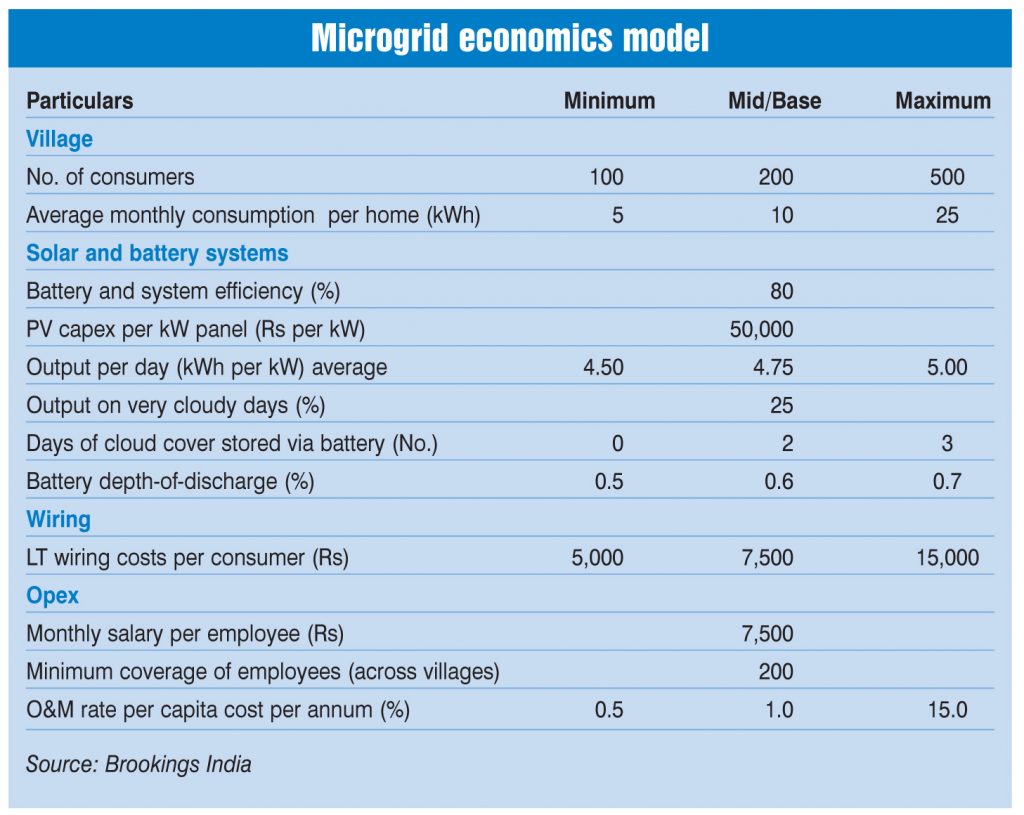
The renewable energy sector has made significant strides over the past few years and this growth momentum is expected to continue in the future. The total renewable energy capacity has grown significantly from 34.98 GW in 2014 to 65.54 GW in 2018. It has been complemented by a decline in wind and solar power tariffs. In this context, renewable energy-based microgrids (as compared to diesel generator sets) could emerge as a potential solution to provide energy security to the masses in a sustainable manner.
Through the use of locally abundant fuel sources such as solar, wind and biomass, along with energy storage solutions, microgrids can provide reliable and consistent power supply, particularly in rural areas. Further, such microgrids enable the infusion of investment at the community level and provide an avenue for revenue generation to the communities through the feed-in tariff mechanism. In addition, by installing distributed generation assets throughout the network, utilities can fall back on them for ancillary services during times of emergency. Microgrids not only enable the maximum integration of renewable energy, but also provide greater load flexibility and better demand management.
In an attempt to promote microgrids in India, the government issued a draft national policy on renewable energy based mini- and microgrids. The policy proposes to set up at least 10,000 renewable micro-and minigrid projects across the country, with 500 MW of generation capacity to be developed by private players by 2022 in order to cater to around 237 million people experiencing energy shortage.
Overview
Microgrids utilise various generation resources including diesel, solar photovoltaic (PV), micro-hydro and biomass gasification, and also employ hybrid technologies such as wind-diesel and PV-diesel. While diesel-based microgrids are the most commonly used globally, solar PV systems are also gaining popularity due to the reduced cost of PV modules and solar PV equipment.
In India, solar microgrids with an aggregate capacity of 1,899 kWp have been installed so far in 63 villages with financial support (30 per cent of the project cost) from the Ministry of New and Renewable Energy (MNRE). Thus, for a 10 kW direct current microgrid, the MNRE offers Rs 105 per watt, and for systems with a module capacity of 10-250 kW, it offers Rs 90 per watt. The systems come with a minimum warranty of five years in the rural and remote areas of the country.
Meanwhile, hydro-based microgrids are typically run-of-the-river projects, wherein the water from a river or stream is diverted into a turbine to generate electricity. Hydropower systems are the most flexible source of renewable energy, since the water flow can be controlled to balance the supply during times of low water consumption. Microgrids can also be operated using biomass, which is not available in a single location and is mostly spread across rural areas.
In India, key players in the microgrid market include Gram Power, Mera Gao Power, DESI Power, Omnigrid Micropower Company and Gram Oorja Solutions. Most of these players deploy solar-based microgrids in combination with smart grid technologies in states such as Karnataka, Maharashtra, Uttar Pradesh and Bihar.
Economics
While microgrids are considered more economical, the capital investment required for their installation is generally higher than that for diesel-based microgrids. This is because renewable-based systems are more capital intensive on a unit cost basis. Further, since microgrids aim to achieve last-mile connectivity, there are inherently high fixed costs of wiring and connectivity for low levels of consumption. Given the cost economics of microgrids, government funding and external support play a crucial role in their scalability.
Issues and concerns
A major challenge with respect to renewable-based microgrids is the intermittent and unpredictable nature of power generation. The availability of wind and solar radiation may not match the load distribution during the day. Further, the localised nature of microgrids can restrict the scalability of these systems. Unlike solar energy, which is widely available throughout the country, wind and biomass are location-specific resources. Also, the process of conversion of biomass into heat or electricity is more complex, costly and time-consuming as compared to solar PV or wind. Hydropower, on the other hand, is more capital intensive and highly dependent on the availability of water. Therefore, a judicious choice needs to be made regarding the renewable energy sources to be used.
If a microgrid is solely based on renewable energy, it invariably requires energy storage solutions, which significantly raise the capital cost of such systems. Thus, the lack of access to capital is a significant impediment to the development of microgrids. Currently, commercial investors are sceptical about investing in the microgrid market due to a perceived lack of visibility, market maturity, and scalability concerns.
In a conventional electricity system, there are proper voltage and frequency controls to keep the load within a predefined limit in order to balance power generation and consumption. During the operation of a microgrid, however, it is challenging to control the power parameters. The lack of protection is also one of the key bottlenecks preventing the growth of the microgrid market. A microgrid can operate either in a grid-connected mode or in islanded mode. The presence of microgrids not only changes the load flow of the network, but also influences the fault currents. In grid-connected mode, it can rely on the utility to provide voltage and frequency reference to maintain synchronous operations. However, in islanded mode, there are challenges with respect to ensuring coordinated fault protection to avoid undetected faults and delayed tripping. Therefore, finding a protection system that responds both to the main grid and the microgrid faults remains a crucial challenge.
Energy storage systems and controls can play a significant role in addressing grid stability issues during renewable energy generation, and are a suitable option for both grid-connected and off-grid renewable energy systems. These solutions can further enhance the value proposition of high-renewable microgrids. Moreover, such solutions present a better and cleaner alternative to diesel generators which result in significant carbon emissions. They allow storage of excess intermittent power during low-peak hours to despatch the same during periods of high demand, and thus enable better load management.
Currently, different types of energy storage technologies are available. These include batteries (lithium-ion, sodium-ion, etc.), pumped hydro storage, compressed air energy storage and high speed flywheels. The decision regarding the deployment of storage technologies depends on their cost, energy density and discharge life cycle, among other things. For optimal operations, the type, configuration and impact of the energy storage system on the microgrid needs to be considered.
Conclusion
Given the increasing global focus on renewable energy generation and commitments to counter climate change, microgrids offer a range of benefits. They help reduce emission reductions, provide economic advantages and increase efficiency. Such systems have the potential to power remote and isolated communities. However, their scalability is restricted due to a host of financial, operational and technical challenges. To improve investment returns and lower tariff rates for potential customers, reductions in equipment costs, finance and soft costs will be critical as the market develops. Further, the successful integration of renewable energy with microgrids will require enabling technologies such as storage systems, grid stabilisers and automation systems.

